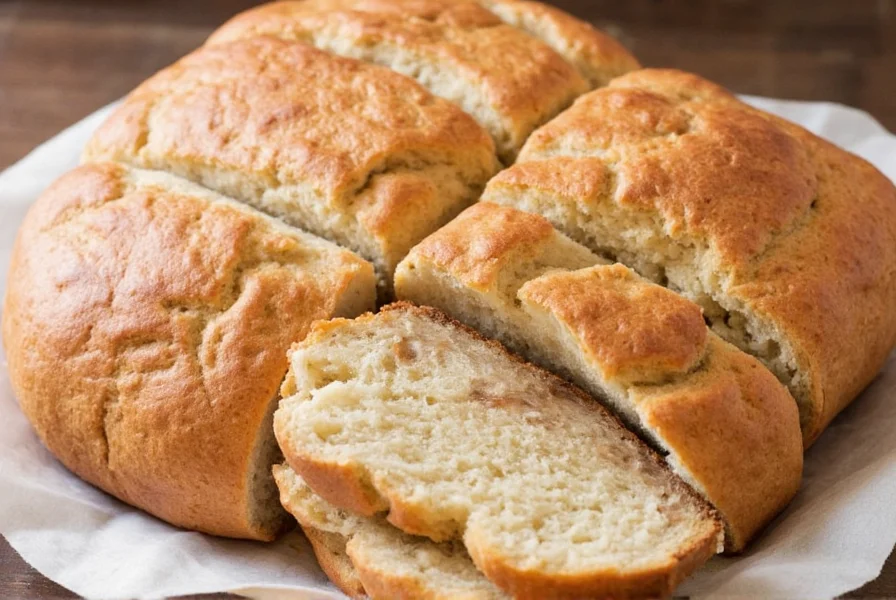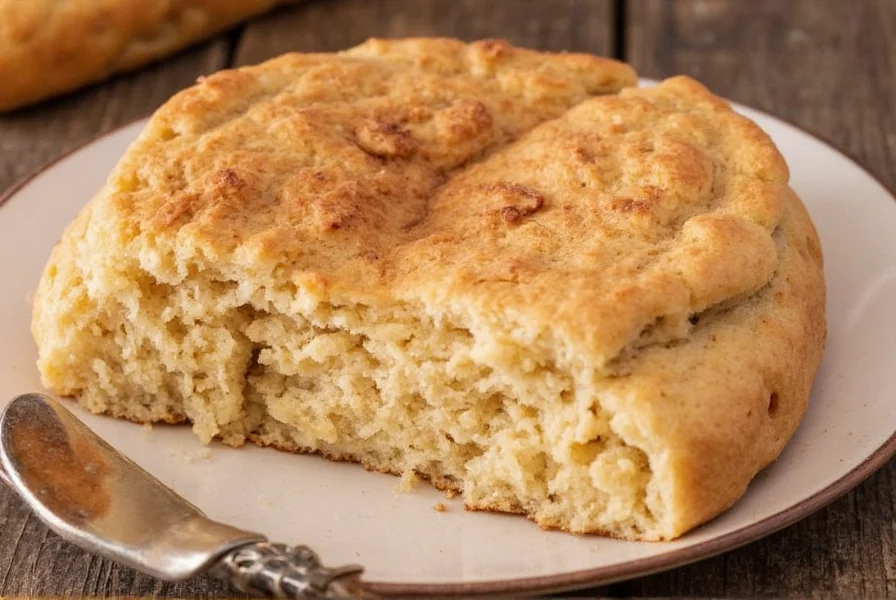Here's the authentic recipe for Amish cinnamon bread: Combine 3 cups flour, 1 cup sugar, 2 tsp baking powder, 1 tsp salt, and 1/2 cup cold butter. Mix 1 cup milk and 1 egg. Form dough, roll in cinnamon-sugar (1/2 cup sugar + 2 tbsp cinnamon), slice, and bake at 350°F for 25-30 minutes until golden brown.
Amish cinnamon bread stands out for its simple ingredients and comforting flavor profile that has been passed down through generations. This traditional recipe creates a tender, slightly sweet bread swirled with aromatic cinnamon that fills your kitchen with an irresistible aroma. Unlike many modern quick breads, authentic Amish cinnamon bread relies on basic pantry staples without complicated techniques, making it accessible for bakers of all skill levels.

Traditional Amish Cinnamon Bread Ingredients
Gathering the right ingredients is crucial for achieving that distinctive Amish bakery flavor. This recipe yields one 9x5 inch loaf that serves 8-10 people.
| Ingredient | Measurement | Notes |
|---|---|---|
| All-purpose flour | 3 cups (360g) | Spoon and level for accuracy |
| Granulated sugar | 1 cup (200g) | Plus additional for cinnamon layer |
| Cold unsalted butter | 1/2 cup (113g) | Cut into small cubes |
| Baking powder | 2 teaspoons | Fresh for best rise |
| Salt | 1 teaspoon | |
| Milk | 1 cup (240ml) | Whole milk recommended |
| Egg | 1 large | Room temperature |
| Cinnamon | 2 tablespoons | Plus additional for topping |
Essential Equipment for Perfect Amish Cinnamon Bread
While this recipe requires minimal equipment, having the right tools ensures consistent results:
- 9x5 inch loaf pan (metal preferred for even baking)
- Pastry cutter or food processor for cutting butter
- Rolling pin for shaping the dough
- Sharp serrated knife for clean slicing
- Cooling rack to prevent soggy bottom
Step-by-Step Amish Cinnamon Bread Instructions
- Prepare dry ingredients: In a large bowl, whisk together flour, 1 cup sugar, baking powder, and salt.
- Cut in butter: Work cold butter into flour mixture using a pastry cutter until it resembles coarse crumbs with pea-sized pieces.
- Mix wet ingredients: In separate bowl, whisk milk and egg until well combined.
- Form dough: Pour wet ingredients into dry ingredients, stirring until just combined. Do not overmix.
- Create cinnamon layer: Mix 1/2 cup sugar and 2 tablespoons cinnamon in a shallow dish.
- Shape the loaf: Turn dough onto floured surface, gently roll into 9x12 inch rectangle. Sprinkle cinnamon-sugar mixture evenly over dough, then roll tightly from the long side.
- Final preparation: Place seam-side down in greased loaf pan. Cut 3-4 shallow diagonal slashes across top.
- Bake: Place in preheated 350°F oven for 25-30 minutes until golden brown and internal temperature reaches 190°F.
- Cool: Let rest in pan for 10 minutes, then transfer to cooling rack.
Professional Baking Tips for Authentic Amish Cinnamon Bread
Master these techniques to elevate your homemade Amish cinnamon bread from good to exceptional:
- Butter temperature matters: Use cold butter straight from the refrigerator for proper flakiness. Warm butter creates dense bread.
- Don't overwork the dough: Mix ingredients just until combined. Overmixing develops gluten, resulting in tough bread.
- Accurate measurements: Use the spoon-and-level method for flour rather than scooping directly from the bag.
- Oven calibration: Verify your oven temperature with an independent thermometer for precise baking.
- Testing doneness: Insert a toothpick into the center—it should come out clean with no wet batter.
Popular Variations of Traditional Amish Cinnamon Bread
While the classic recipe stands beautifully on its own, these thoughtful variations can accommodate different preferences:
- Nutty version: Add 1/2 cup chopped pecans or walnuts to the cinnamon-sugar layer for texture contrast
- Fruity twist: Incorporate 1/2 cup dried apples or raisins into the dough before rolling
- Gluten-free adaptation: Substitute with 1:1 gluten-free flour blend and add 1 teaspoon xanthan gum
- Whole wheat option: Replace 1 cup all-purpose flour with whole wheat flour for added nutrition
- Streusel topping: Mix 1/4 cup flour, 1/4 cup brown sugar, and 2 tablespoons cold butter for a crumbly finish
Storage and Serving Recommendations
Enjoy your Amish cinnamon bread at its peak freshness with these storage guidelines:
- Room temperature: Store in airtight container for up to 3 days
- Refrigeration: Wrap tightly and refrigerate for up to 1 week
- Freezing: Slice and freeze individual portions in freezer bags for up to 3 months
- Reheating: Warm slices in toaster oven at 300°F for 5-7 minutes for best texture
- Serving suggestion: Pair with coffee or tea; excellent with a pat of butter or cream cheese spread
Troubleshooting Common Amish Cinnamon Bread Issues
Resolve these frequent baking challenges with professional solutions:
- Dense texture: Likely caused by overmixing or expired baking powder. Measure ingredients precisely and check leavening agent freshness.
- Collapsed center: Oven temperature too high or underbaked. Use an oven thermometer and verify internal temperature reaches 190°F.
- Burning edges: Rotate pan halfway through baking or use light-colored metal pans instead of dark ones.
- Uneven cinnamon distribution: Roll dough tightly and ensure cinnamon-sugar mixture is evenly sprinkled before rolling.
- Sticky dough: Chill dough for 15-20 minutes before rolling if too sticky to handle.
Frequently Asked Questions
Can I make Amish cinnamon bread without baking powder?
No, baking powder is essential for proper rise in this quick bread recipe. Baking soda won't work as a substitute because it requires acid to activate, which this recipe doesn't contain. For best results, use fresh baking powder that hasn't expired.
Why does my Amish cinnamon bread fall after baking?
This typically happens when the bread is underbaked or when the oven temperature fluctuates. Ensure your oven is properly preheated and maintain a consistent temperature throughout baking. The internal temperature should reach 190°F when tested with a thermometer. Avoid opening the oven door during the first 20 minutes of baking.
How can I prevent my cinnamon bread from becoming dry?
Overbaking is the most common cause of dry cinnamon bread. Check for doneness starting at 25 minutes. The bread is done when a toothpick inserted in the center comes out clean but not dry. Also, ensure accurate ingredient measurements—too much flour creates dry bread. Let the bread cool completely in the pan before removing to retain moisture.
Can I prepare Amish cinnamon bread dough ahead of time?
Yes, you can prepare the dough and refrigerate it overnight. After assembling the rolled loaf in the pan, cover tightly with plastic wrap and refrigerate. When ready to bake, let it sit at room temperature for 20-30 minutes while the oven preheats, then bake as directed, adding 5-7 minutes to the baking time if needed.
What makes Amish cinnamon bread different from regular cinnamon bread?
Authentic Amish cinnamon bread typically uses simple ingredients without yeast, relying on baking powder for rise. It has a denser, more cake-like texture compared to yeast-based cinnamon rolls. The traditional recipe emphasizes simplicity with minimal ingredients, reflecting the Amish community's values of modesty and practicality in cooking.











 浙公网安备
33010002000092号
浙公网安备
33010002000092号 浙B2-20120091-4
浙B2-20120091-4